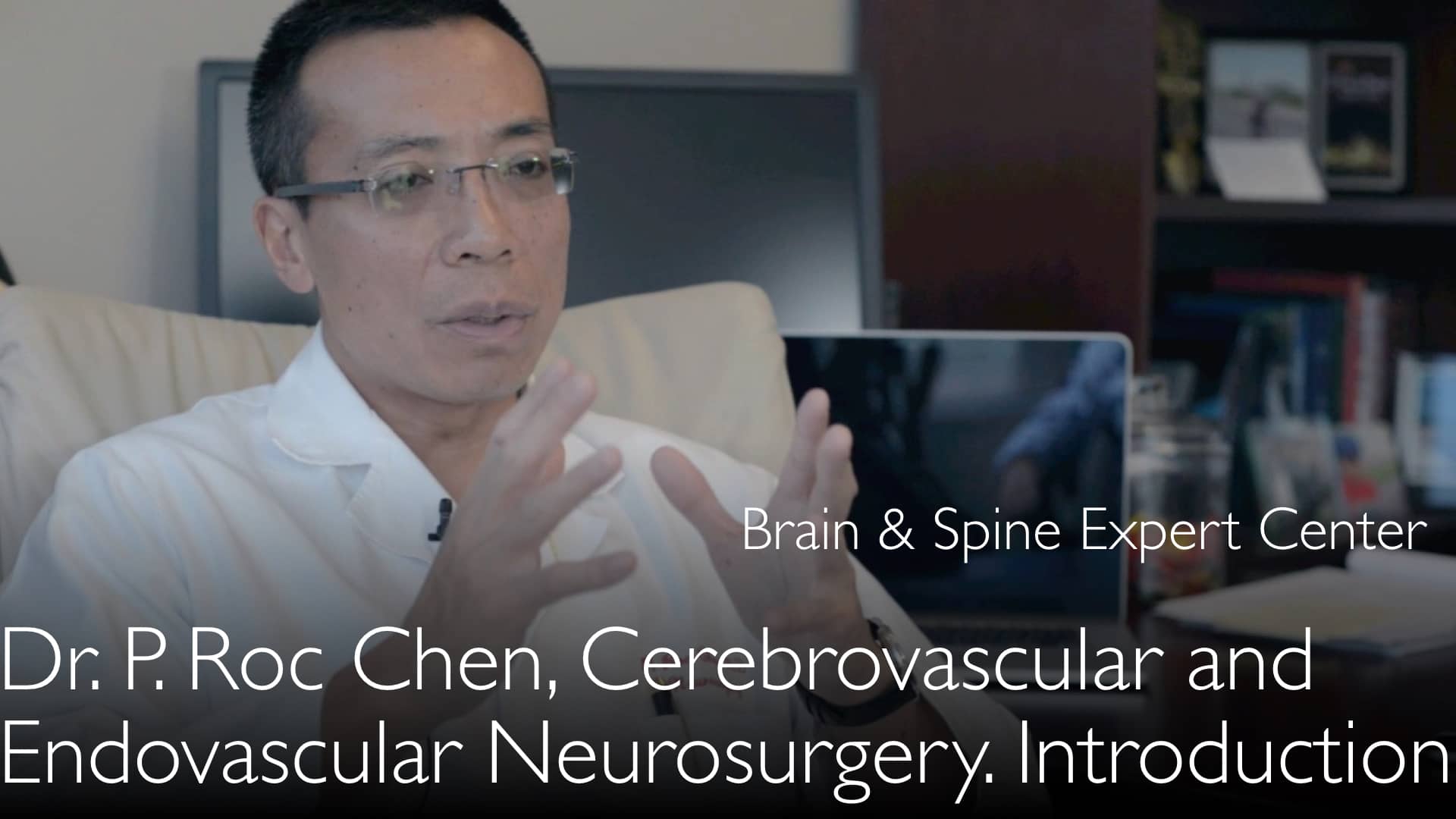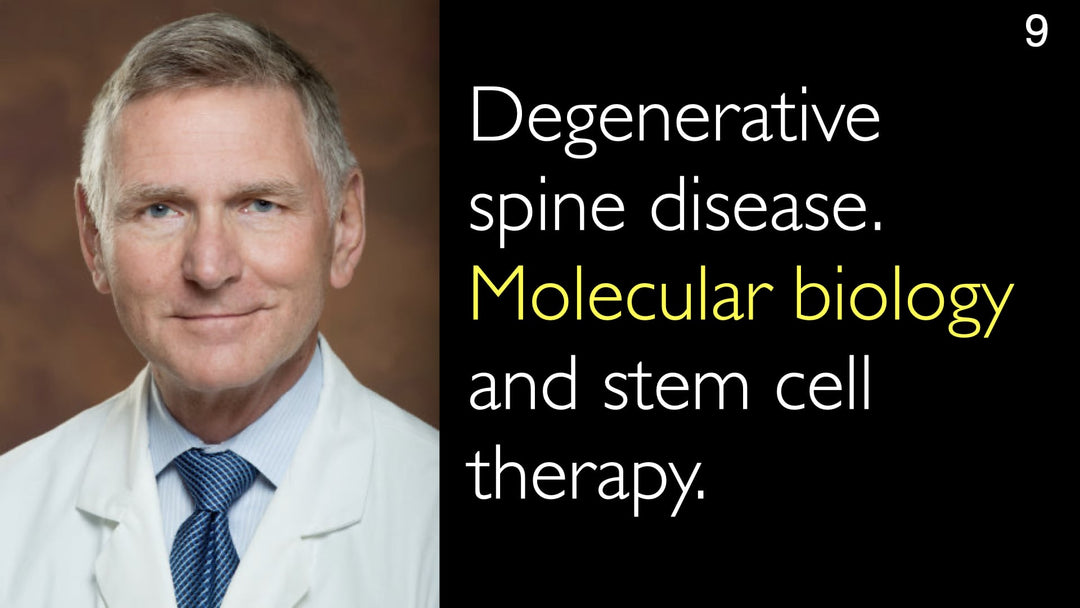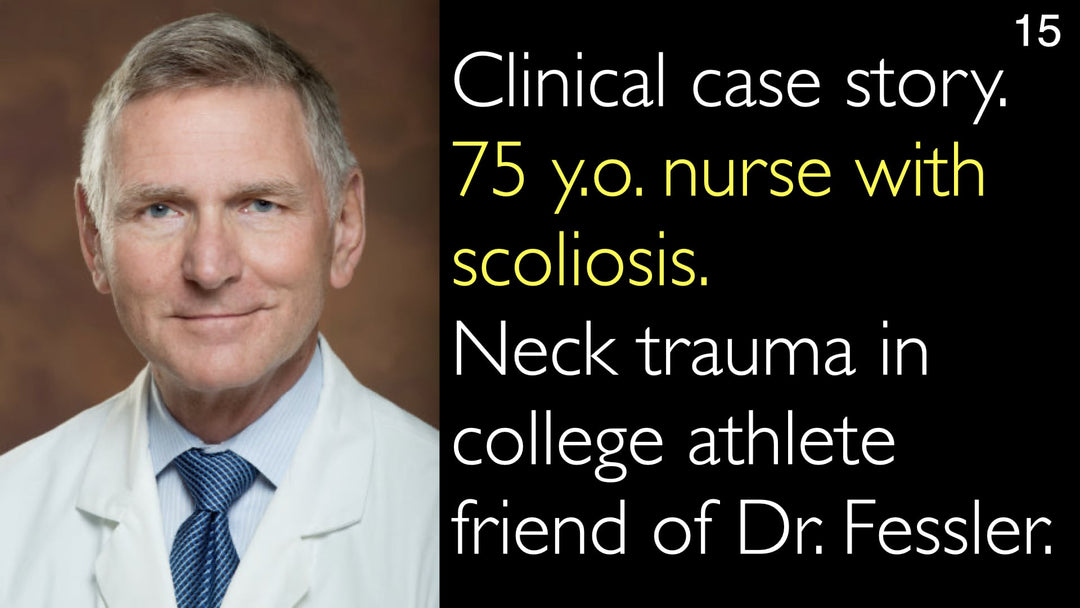Leading expert in cerebrovascular neurosurgery, Dr. Peng Chen, MD, explains the complex decision-making process for brain arteriovenous malformation treatment. He details how treatment strategy depends on AVM location, size, and rupture history, advocating for a multidisciplinary team approach that combines endovascular embolization and open brain surgery for optimal outcomes. Dr. Chen clarifies that the annual bleeding risk for unruptured AVMs is 1-4%, while the risk of re-bleeding is significantly higher, at 4-7% per year, after an initial rupture.
Modern Treatment Strategies for Brain Arteriovenous Malformations (AVMs)
Jump To Section
- What is a Brain AVM?
- Annual Bleeding Risk of an AVM
- Treatment Risks vs. Benefits
- Treating Associated Aneurysms
- Ruptured AVM Treatment
- Multidisciplinary Treatment Approach
- Observation vs. Intervention
What is a Brain AVM?
Brain arteriovenous malformations represent a category of cerebrovascular lesions with abnormal connections between arteries and veins. Dr. Peng Chen, MD, describes three primary types. The first is a high-flow congenital AVM, which forms during fetal development and results in a plexiform web of incorrect vascular connections.
The second type is a dural arteriovenous fistula, which often develops during a patient's lifetime, potentially due to venous thrombosis. The third type is a cavernous malformation, or cavernoma, which is not visible on standard vascular imaging but can be seen on MRI and CT scans, often causing small bleeds.
Annual Bleeding Risk of an AVM
The risk of a brain AVM rupturing and causing a hemorrhage is a critical factor in treatment decisions. According to Dr. Peng Chen, MD, the annual bleeding risk for an unruptured brain arteriovenous malformation is generally between 1% and 4%. This risk is not uniform and depends heavily on specific AVM characteristics.
Dr. Peng Chen, MD, explains that the risk of rupture depends on the size and geometry of the vascular channels within the malformation. He notes that very large AVMs, classified as Spetzler-Martin grade 4 or 5, may actually have a lower rupture risk than previously believed, potentially less than 1% per year, especially when the risk from associated aneurysms is accounted for separately.
Treatment Risks vs. Benefits
Weighing the risks of treatment against the natural risk of hemorrhage is the cornerstone of managing brain arteriovenous malformations. Dr. Peng Chen, MD, emphasizes that the risks from aggressive surgical or endovascular treatment of large AVMs can sometimes be higher than the risk of a spontaneous rupture. This understanding has led to a more conservative approach for certain complex cases.
Conversely, Dr. Chen points out that smaller AVMs often carry a higher relative bleeding risk. When these are located in non-eloquent, or less critical, areas of the brain, treatment can be performed very safely. In these scenarios, the benefit of eliminating the future risk of hemorrhage outweighs the procedural risks, making intervention the preferred course of action.
Treating Associated Aneurysms
Patients with brain arteriovenous malformations can develop associated aneurysms due to years of abnormal, high-pressure blood flow. Dr. Peng Chen, MD, highlights that these brain aneurysms themselves carry a significantly increased risk of bleeding. This complication requires specific attention during a patient's evaluation.
The treatment strategy often focuses on addressing the aneurysm first. Dr. Peng Chen, MD, notes that these aneurysms can frequently be treated successfully using endovascular methods, which are less invasive than open surgery. Managing the aneurysm separately is a crucial step in reducing the overall bleeding risk for the patient.
Ruptured AVM Treatment
The treatment paradigm shifts significantly after a brain arteriovenous malformation has ruptured. Dr. Peng Chen, MD, states that the risk of a repeat hemorrhage is much higher, ranging from 4% to 7% per year. This elevated risk means that patients with a ruptured AVM will generally require some form of treatment to prevent another bleed.
The principles of treating a ruptured AVM involve the same modalities—surgery, embolization, and radiosurgery. However, the urgency and necessity for complete obliteration are greater. The decision-making process remains complex, especially if the AVM is located in an eloquent area of the brain, requiring careful planning by a multidisciplinary team.
Multidisciplinary Treatment Approach
Modern brain arteriovenous malformation care demands a collaborative, multidisciplinary team approach. Dr. Peng Chen, MD, strongly advocates that treatment should not rely on a single method. He insists that the best outcomes are achieved through a combination of endovascular embolization and open brain surgery, tailored to the individual patient's anatomy.
This process begins with a meticulously detailed treatment plan formulated by a team including neurosurgeons, endovascular specialists, and radiosurgery experts. The goal is to completely obliterate the AVM while preserving function, particularly when it is located near critical brain areas. Dr. Chen warns against incomplete, "half-way" treatment, which can be ineffective and leave the patient at risk.
Observation vs. Intervention
The decision between watchful waiting and active intervention is nuanced. Dr. Peng Chen, MD, explains that observation may be a valid strategy for large, unruptured AVMs in eloquent locations where treatment risks are prohibitively high. This is especially true given the potentially lower annual bleeding rates for these complex lesions.
However, for younger patients or those with AVMs in safer locations, intervention is often recommended. The cumulative lifetime risk of hemorrhage justifies treatment. Dr. Chen concludes that a thorough assessment by a specialized team is essential before deciding on any management path, ensuring the chosen strategy aligns with the patient's specific risk profile and anatomy.
Full Transcript
Brain arteriovenous malformations treatment can be very complex. Observation, open brain surgery, or endovascular embolization are three treatment methods for cerebral AVMs. They can be used together or sequentially.
Brain arteriovenous malformations treatment strategy depends on location and type of AVM. Probability of cerebral arteriovenous malformation hemorrhage is higher with AVMs that contain a brain aneurysm.
Dr. Peng Chen, MD: Arteriovenous malformation is an indication for open brain surgery and for endovascular treatment. AVM bleeding risk depends on previous history of hemorrhage and AVM size and shape. Intracranial arteriovenous malformations of Spetzler Martin AVM grade 4 is lower than usually reported. Eloquent brain areas locations of AVM have to be assessed for watchful waiting observation.
What are the nuances of treatment of brain arteriovenous malformation? What are modern methods to treat cerebral arteriovenous malformations?
Dr. Peng Chen, MD: Brain arteriovenous malformations (brain AVM) are a big category of cerebrovascular lesions. Broad definition of arteriovenous malformations is this: the brain includes high-flow arteriovenous malformations and dural arteriovenous fistulas. Cerebral arteriovenous malformations are usually congenital. They form during 4 to 8 weeks of fetal development, when vascular structures develop in the fetus.
Wrong development of cerebral blood vessels results in plexiform web of incorrectly formed connections between arteries and veins. Second type of vascular malformation in the brain is called brain dural arteriovenous fistula (BDAVF). This malformation often forms during patient's lifetime. We do not know the reasons why brain dural arteriovenous fistulas develop. They could be a result of venous thrombosis in the brain, but we do not really know.
Third type of brain arteriovenous malformation is cavernous malformation (cavernous angioma). They are not visible on vascular imaging, but brain MRI and CT scans can show cavernous malformations well. Brain cavernous malformations can cause brain hemorrhage (bleeding) on a small scale. So these are three types of brain arteriovenous malformations.
High-flow brain arteriovenous malformations have a risk of bleeding into the brain. The risk of brain hemorrhage from unruptured cerebral arteriovenous malformations is a controversial issue. Probability of rupture of brain arteriovenous malformation has been studied. However, we do not know with certainty how big is the risk of bleeding.
I think that the risk of rupture of any unruptured brain arteriovenous malformation is 1% to 4% per each year. This risk of bleeding depends on the size of arteriovenous malformation. The risk of brain arteriovenous malformation rupture also depends on geometry of vascular channels inside the arteriovenous malformation.
Very large brain arteriovenous malformations are called "Spetzler Martin AVM grade 4" or "Spetzler Martin AVM grade 5". Risk of rupture of large brain AVMs decreases if we deduct the risk of rupture of brain aneurysms. Brain aneurysms can sometimes co-exist with brain arteriovenous malformations.
The risk of rupture and bleeding of these large brain arteriovenous malformations (Spetzler Martin grade 4 and 5) is much lower than we previously thought. Risk of rupture of brain arteriovenous malformation is about 1% per each year, or it is less than 1% per each year.
We previously treated large brain arteriovenous malformations very aggressively. But risks from surgical and endovascular treatment of large brain AVMs are also very high. Risks of treatment could be higher than risks of spontaneous aneurysm rupture. Therefore, we currently do not aggressively treat very large brain arteriovenous malformations.
Sometimes patients with brain AVMs also have brain aneurysms. Aneurysms form in such patients because of many years of high pressure blood flow through brain vessels. Brain aneurysms in patients with cerebral arteriovenous malformations carry increased risk of bleeding from the aneurysm. We can often treat brain aneurysms in such patients by endovascular methods.
Approximately two thirds of patients with large cerebral arteriovenous malformations may have seizures. We can successfully treat seizures in these patients too. The risk of bleeding from rupture of cerebral arteriovenous malformation is higher in those patients who have brain arteriovenous malformations of smaller size.
Sometimes brain arteriovenous malformation is located in the area of brain that does not contain very important functional area around AVM. Then we can treat brain arteriovenous malformation very safely. It is better to treat such cerebral arteriovenous malformations because the risk of their rupture is higher than the risk of surgical or endovascular treatment.
Risk of brain AVM rupture is higher in younger patients. Particularly younger patients can benefit from open brain surgery or endovascular embolization procedure. Combination of both treatments methods can often remove cerebral arteriovenous malformation completely.
Stereotactic radiosurgery ("gamma knife") can be used to treat brain arteriovenous malformation in areas of the brain that are very difficult to reach or where surgery can damage brain function. But it is most important to carefully and fully assess the situation of the patient with brain arteriovenous malformation before deciding about any method of treatment or observation of brain arteriovenous malformation.
Incomplete, half-way treatment of patients with unruptured brain AVM is not good. It is best to use combination of endovascular embolization and open brain operation. Do not use only one method of treatment. Doctors should use multidisciplinary team approach.
Surgeons must carefully prepare a detailed plan of treatment of brain arteriovenous malformation before any method of treatment is initiated. For ruptured brain arteriovenous malformations the risk of repeat rupture is much higher. Risk of repeat brain bleeding is 4% per year to 7% per year. So we know that patients with ruptured brain AVMs in general require treatment.
The principle of treatment of ruptured brain arteriovenous malformations is the same as in treatment of unruptured brain AVMs. Sometimes cerebral AVM is located in less important area of their brain. Open brain surgical operation can be used.
Sometimes cerebral arteriovenous malformation is located in area of the brain that has functionally important cortex. Then the decision about treatment is complex and difficult. Neurosurgeons, endovascular neurosurgery specialists and radiosurgery specialists have to decide how to obliterate brain arteriovenous malformations and how to treat a patient without damaging functionally important areas of the brain.
This is the current level of our approach to treatment of cerebral arteriovenous malformations. Brain arteriovenous malformations treatment: observation or intervention? Endovascular embolization or open brain surgery? Advances in treatment of AVMs.








